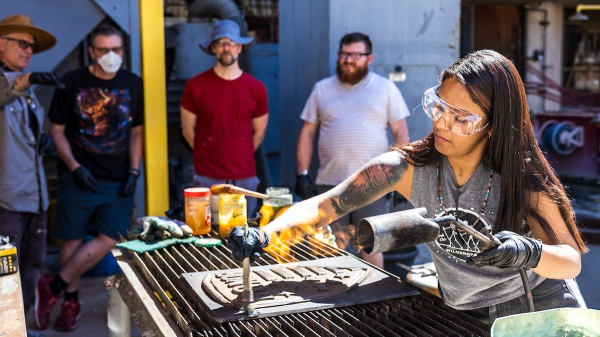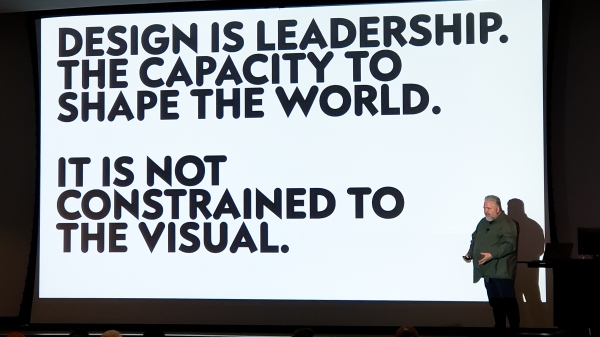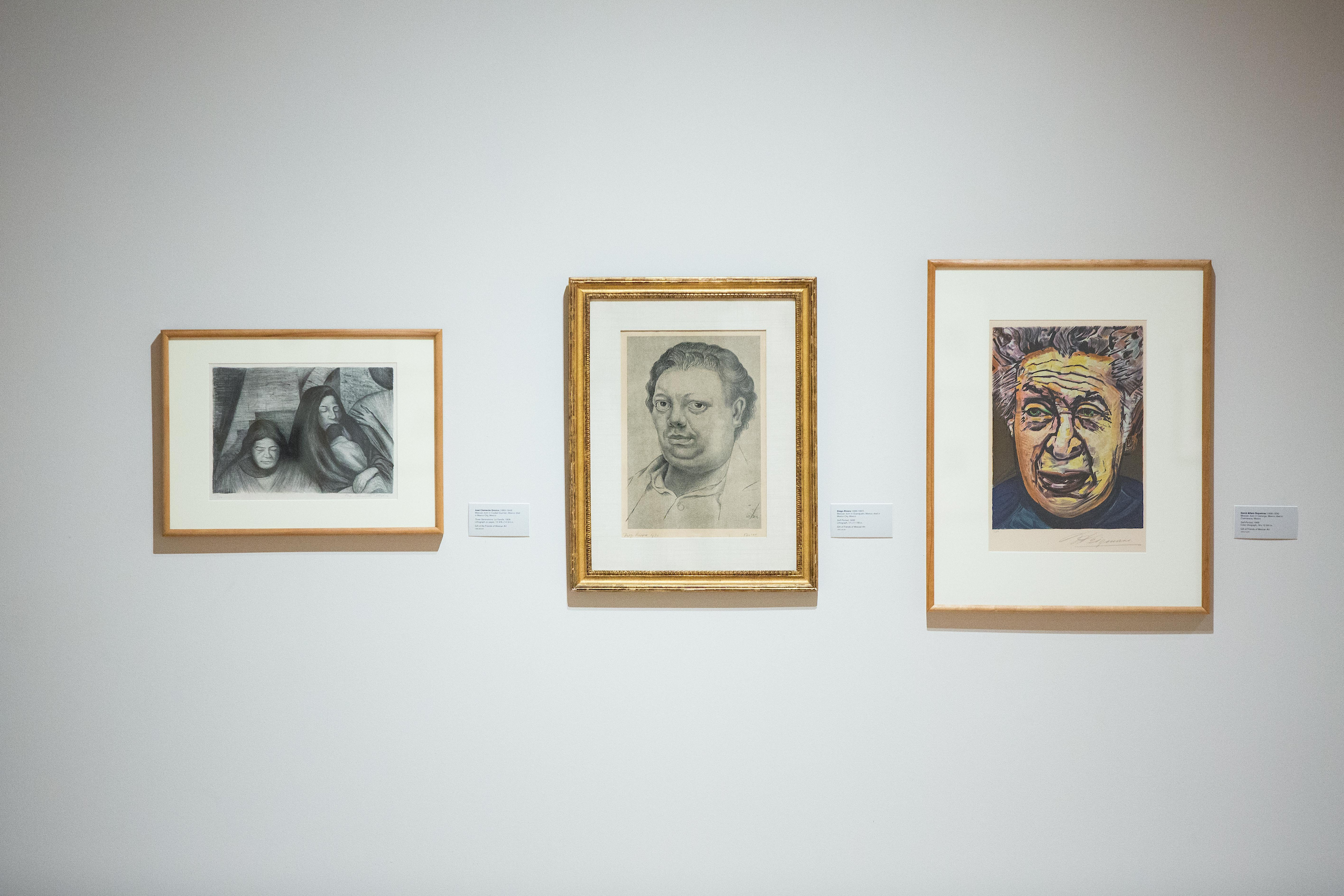ASU's Diego Rivera painting is of the same era as record-breaking work
'Niña Parada' shows artist's elevation of indigenous culture in post-revolutionary Mexico, ASU curator says

Last week, a painting by Mexican artist Diego Rivera sold for $9.76 million, making it the highest-priced Latin American artwork ever to be sold at auction.
The sale of the painting “The Rivals” eclipsed the previous record for a Latin American work, a painting by Frida KahloKahlo's "Two Nudes in the Forest” sold for $8 million in 2016., Rivera’s wife. The Rivera work, which hung in the home of the late philanthropist David Rockefeller, was sold to an unidentified collector and it’s unclear whether it will ever be shown in public.
But people who want to appreciate Rivera’s other work can do so right here at Arizona State University. The ASU Art Museum has two pieces by the artist — the painting “Niña Parada” from 1937 and a lithograph of a self-portrait from 1930. Both are part of the current exhibit, “Bajo Presíon/Under Pressure,” which runs through Aug. 11. “Niña Parada” is part of the original collection gift that formed the museum from Oliver B. James, who also donated works by Georgia O’Keeffe and Edward Hopper.
Miki Garcia, the new director of the ASU Art Museum, said the Rivera works are part of an incredible permanent collection of Mexican art ranging from the late 1800s to the present day, including the three “greats” of the postrevolutionary era: Rivera, José Clemente Orozco and David Álfaro Siqueiros.
Garcia said that “Niña Parada,” an image of a little girl painted in bold colors, is symbolic of Rivera’s work at the time.
“It is representative of Rivera’s real interest in highlighting the indigenous past and present of Mexico. One of the things he did was help establish a national identity after the revolution, embracing its indigenous heritage as well as its Spanish one,” she said.
“It had a modernist artistic expression, but it always owed to and was inspired by local indigenous traditions,” she said. “It merged the American and European styles.”
The painting in the Rockefeller sale, “The Rivals,” was commissioned by Abby Aldrich Rockefeller in 1931 and given as a wedding gift to her son David and his wife. The painting, which depicts a colorful scene, hung in the Rockefeller home in Maine.
Garcia said the record-setting painting is in the same style as ASU’s “Niña Parada.”
“While ours is a solo figure and that one is a group of figures, it’s definitely the same visual language — the costumes, the formal treatment of the figures,” she said.
The Diego Rivera "Self Portrait" lithograph from 1930 (center) is part of the ASU Art Museum's "Bajo Presion/Under Pressure" exhibit, which runs through Aug. 11. Photo by Deanna Dent/ASU Now
Rivera is one of the most important Mexican artists of the 20th century, famous in his time for his large public murals, which celebrated a new view of history for a largely illiterate population.
“They are didactic — these narrative stories for the country to learn about their own history and their own place in the world,” Garcia said.
“And what’s revolutionary about that is that rather than promoting the glory of the Spanish colonizer, what he does is pretty radical — to elevate the history of the Aztecs, the Maya, the Zapotecs, the indigenous people of Mexico and paint them in places like the National Palace.”
The self-portrait lithograph in the ASU Art Museum, which is from 1930, is unsparing in its depiction.
“He did, throughout his life, do self-portraits in an unflinching way. He was a man who was obese and corpulent and really didn’t finesse that in any way,” she said.
Garcia said that self-scrutiny came from his popularity and his subject matter. While he painted the vibrantly beautiful little girl in the ASU collection and is famous for his calla lily works, his topics were subjugation, colonization and genocide.
“All of the artists of that time were Marxists, dealing with the trauma of postrevolutionary Mexico and dealing with being the neighbor of the U.S. during the industrial revolution and thinking about the worker and exploitation,” she said.
Rivera had a tumultuous relationship with Kahlo, whose own work was influenced by Spanish-American folk art and traditions. She has always been popular in Mexico and, increasingly, in the United States, especially since the Chicano-American civil rights movement, Garcia said.
“I would say she is probably the more popular but in terms of art history, Rivera is still considered the master,” she said.
Garcia said the high price for “The Rivals” is likely due to two factors: Few Rivera works come onto the market; and this one was part of the celebrated Rockefeller collection, which sold for a total $833 million in the three-day sale in New York last week.
Besides the Rivera works, the “Bajo Presíon/Under Pressure” exhibit of early and mid-20th century Mexican art also includes works by Siqueiros, Leopoldo Méndez and Rufino Tamayo, among others.
“As a museum, we house objects and store them and preserve them, but we also enliven them by drawing these threads into today and projecting into the future,” she said. “(Museums) are not these tombs where artworks go to die. They’re places where we can use the history of art to learn about history but also how it plays out today and how artists continually help shape our world.”
The ASU Art Museum has a new partnership with the Los Angeles County Museum of Art that will include a fellowship to increase the diversity of museum leadership but also will include exchanges of artifacts.
“We will have access to historical objects from Spanish Colonial, from Mesoamerica and from Islamic and Oceana as well," Garcia said. "So we can use what’s in our print collections or our ceramic collections and to help us draw a larger narrative and give our works much larger context.”
Top photo: Diego Rivera's painting "Niña Parada," painted in 1937, is part of the ASU Art Museum's permanent collection. Photo by Deanna Dent/ASU Now
More Arts, humanities and education

'Devils in the Metal': ASU vet leads iron cast workshop for former service members
Bruce Ward believes everyone has a symbol of strength or resilience, and they have an obligation to find it. His happens to be a paper crane in an ocean wave. “It’s the idea that we are the…

ASU English professor wins Guggenheim Fellowship for poetry
The awards — and opportunities — keep piling up for Safiya Sinclair, an associate professor in Arizona State University’s Department of English. In mid-April, Sinclair received one of 188 Guggenheim…

Designer behind ASU’s brand named newest Herberger Institute Professor
Bruce Mau, co-founder and CEO of the Chicago-based holistic design consultancy Massive Change Network, has joined Arizona State University’s Herberger Institute for Design and the Arts as its newest…
